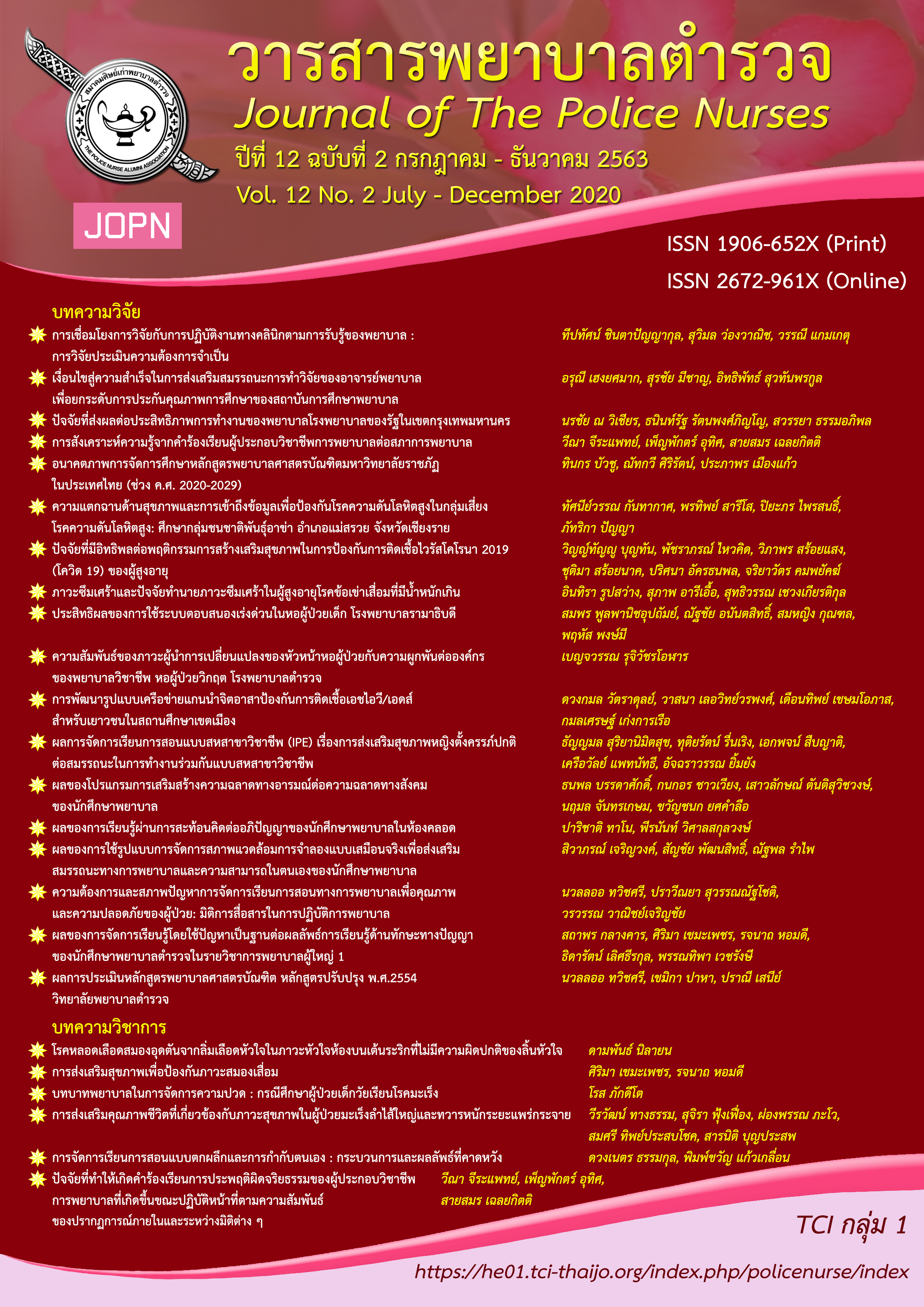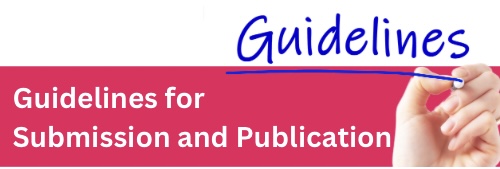NURSE’S ROLE IN PAIN MANAGEMENT: A CASE STUDY OF SCHOOL-AGED CHILDREN WITH CANCER
Keywords:
Pain, Symptom management, School age children, CancerAbstract
Children with cancer always confront pain from their disease, procedures, and cancer treatments, which results in the suffering of both patients and their families. The nurse’s role in pain management is to relieve patients’ pain and their family’s anxiety. The symptom management model of Dodd is used to take care of pain in school-aged children who can’t manage their symptoms by themselves. This model helps to relieve and reduce the pain experience that affects psychological health in the children, and assists their families to be able to manage their children’s pain. Consequently,the nursing concept of symptom management explains how to care of the patient when it is applied to school-age children with cancer, it was able to help completely assessing the children’s symptoms, such as pain experience, pain management method, and the result to provide the all-around information assisting the evaluation of children patients with cancer to have better management resulting in more efficient pain treatment.
Downloads
References
Attharos, T., & Arpaichiraratana, C. (2011). Continuous care model in children with chronic diseases. Thai Journal Nursing Council, 26(Special Issue), 112-125.
Brown, M. A (2013). The role of nurses in pain and palliative care. Journal of Pain & Palliative Care Phamacotherapy, 27, 301-302.
Cohen, L. L., Blount, R. L., Cohen, R. J., Ball, C. M., McClellan, C. B., & Bernard, R. S. (2001). Children's expectations and memories of acute distress: Short-and long-term efficacy of pain management interventions. Journal of pediatric psychology, 26(6), 367-374.
Cris Foundation for cancer research. (2013). Clinical practice guideline for pain management in children with cancer. Retrieved from https://criscancer.org/wp-content/uploads/2016/03/CPG_pain_management.pdf
Dodd, M., Janson, S., Facione, N., Faucett, J., Froelicher, E. S., Humphreys, J., & Taylor, D. (2001). Advancing the science of symptom management. Journal of Advanced Nursing, 33(5), 668-676.
Eamchunprathip, S., & Tepapal, T. (2017). Effects of cold compression with self-efficacy on the pain and recovery among patients received open reduction internal fixation of femur. Nursing Journal, 44(1), 39-49.
International Association for the Study of Pain. (2019). IASP's proposed new definition of pain released for comment. Retrieved from https://www.iasp-pain.org/PublicationsNews/NewsDetail.aspx?ItemNumber=9218
Jaiban, S., Ruangpuk, S., & Saetang, N. (2016). The suitability of time for applied hot pack, physiotherapy department, Hua Hin Hospital. Hua Hin Sook Jai Klai Kangwon Journal, 1(2), 66-77.
Newcomb, P. (2010). Using symptom management theory to explain how nurse practitioners care for children with asthma. Journal of Theory Construction & Testing, 14(2), 40-44.
Ngamkham, S., Krutchan, N., Sawangchai, J., Wattanakul, B., Chidnayee, S., & Kiecha, R. (2018). Knowledge about pain assessment and management of Thai Nurses. Journal of Nursing and Health Care, 36(1), 81-89.
Ruksrithong, T. (2013). Quality Improvement project pain management in children. Pathum Thani: Nursing care of special pediatric patients Thammasat University Hospital for the fiscal year 2013. Retrieved from http://www.hospital.tu.ac.th/plantu/data/Project%20CQI/CQI_2556/56_019.pdf
Sunthornsirisap, S., & Sanasuttipun, W. (2012) Effect of distraction using digital game on pain in children post appendectomy 24 hours. Journal of Nursing Science, 30(4), 72-124.
Theppradit, P., Hongchayangkool, K., Wattanasit, P. (2016). Symptom experience of taste and smell alterations among children with receiving chemotherapy. Songklanagarind Journal of Nursing, 36(1), 127-142.
Downloads
Published
How to Cite
Issue
Section
License
ผลงานที่ได้ตีพิมพ์แล้วจะเป็นลิขสิทธิ์ของวารสารพยาบาลตำรวจ















